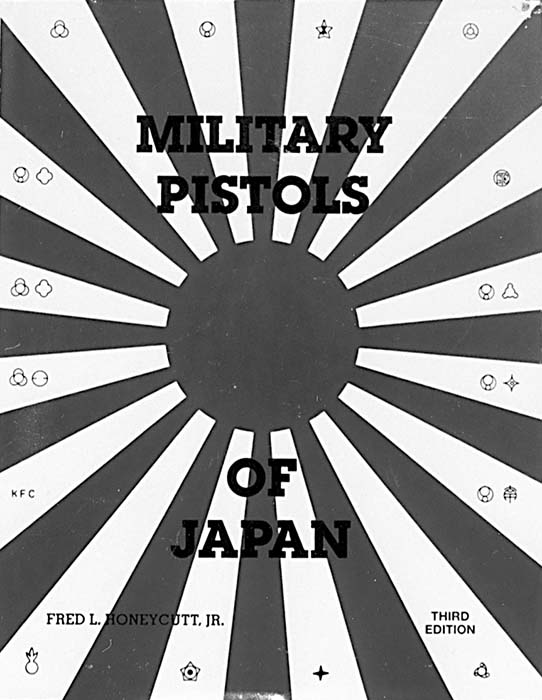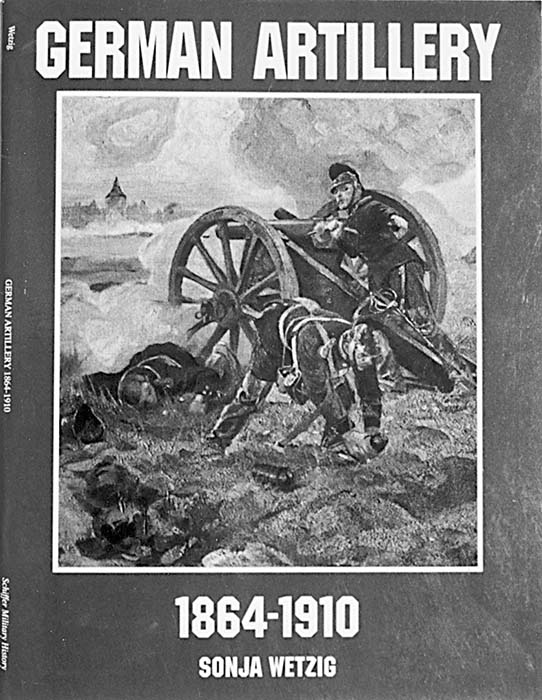By Stephen Stuart

Military Pistols of Japan
By Fred L. Honeycutt Jr.
Published by Julin Books
5282 Ridanway Palm Beach
Gardens, Florida 33418
ISBN 0-9623208-
4-6 Price $42.00 plus $4.50 shipping and handling
Some firearms just have a mystique about them, either because they have a certain history behind them or, because they don’t have any commonly known history. Especially, if the only available information about these firearms is in a language foreign to the reader. It is the latter group that is the focus of this book review.
Japanese handguns fall into this class, a class of misinformation, GI legend, and just plain disinformation. Fred Honeycutt’s book, Military Pistols of Japan, sheds the light of truth into this dark corner of history. The book starts by describing all the characters most likely to be found on Japanese pistols and more importantly translates the characters into English. From this basic starting point, he discusses the first modern type of handgun ever produced in Japan, the Type 26 revolver. The Type 26 revolver is a six-shot, top break pistol that fires a 9mm cartridge.
The first semi-automatic handgun produced in Japan (for the military) was the Nambu type. The large Type Nambu pistol fired the 8mm Nambu round and the smaller “Baby Nambu” fired the 7mm Nambu round. Neither of these pistols were produced in abundance, making them sought after by collectors.
The next major semi-automatic pistols put in production (and the most common) were the Type 14 and the Type 14 modified. The Type 14 series pistols fired the 8mm Nambu round, just like the earlier Large Type Nambu. The main external difference between the Type 14 and Type 14 modified was the trigger guard. The trigger guard on the modified version was larger, so a gloved finger could still fire the pistol in cold weather.
The author gives an introduction to the Type 94 pistol. The Type 94 was considered the worst model ever produced by Japanese industry. The reason was the number of misfires associated with the pistol. Finally, the author gives the reader a brief look at Japanese flare guns. This is the best source to date that I have seen on this field of collecting Japanese flare guns.
As with his other books, Mr. Honeycutt has done a superb job on taking the mystery out of Japanese hand held pistols and flare guns, and I do not know of any better resource for this information.

The Guns of Dagenham; Lanchester-Patchett-Sterling.
By Peter Laidler and David Howroyd
Produced and edited by R. Blake Stevens Published by Collector Grade Publications Incorporated
P.O. Box 1046
Cobourg, Ontario
Canada K9A4W5
ISBN 0-88935-204-6
Price $47.50 plus $4.50 shipping and handling
The Sterling Manufacturing Company was located in the town of Dagenham, England (hence the title of the book). From its early beginning, the Sterling Works (Dagenham) Ltd. produced electric lights and accessories (light mantles, globes, etc.). This humble start as a manufacturer of lighting material would lead to grander things. When Britain was experiencing its darkest hour, the Sterling company answered the call to duty. The company began making war material, specifically 25-pound field gun recoil assemblies. During this period is when Sterling was awarded a contract to produce the companies first submachine gun—the Lanchester.
The Lanchester automatic carbine is a simple select fire 9mm. The Lanchester is basically a copy of an earlier German design, the MP 28 II. The Lanchester is heavy and user’s reported that the magazines were atrocious. From this start in manufacturing SMG’s would be the path to future arms contracts.
Experience with the Lanchester SMG’s led to refinements and improvements. These led to the production of the Patchett SMG. The Patchett (like the Lanchester) derived it’s name from the gun’s designer—in this case George Patchett. These basic guns were to evolve in to the Sterling SMG. Officially, the name was not changed to Sterling until the Mk III / L2A2. Also covered in the text are export models like the Canadian L1 and of course the MK6, which is the closed bolt civilian version that was shipped into the United States in the 1980’s.
The authors discuss all models of the Sterling series including the suppressed version, the L34A1. Before describing this weapon, the authors backtrack a little and give the readers information on an earlier suppressed weapon, the DeLisle rifle. The DeLisle rifle (chambered for .45 ACP) has taken on a legend all it’s own over the years. The authors, of course, set the record straight on the actual history of this weapon.
The Sterling submachine gun is a very desirable gun, and in the United States they are very rare. This submachine gun has every thing that the Class 3 enthusiast admires, other than availability. Reading this book filled in a lot of the blanks for me, as well as providing a very interesting read. As with every book I have ever seen from Collector’s Grade Publications, the book is well researched by the authors and a must addition to one’s small arms bookshelf.

German Artillery, 1864-1910
By Sonja Wetzig
Translated by David Johnston
Published by Schiffer Publishing Ltd.
77 Lower Valley Road
Atgen, PA 19310
ISBN 0-7643-0179-9
Price $9.95 plus $4.50 shipping and handling
Good information on early artillery is sometimes hard to find. Information is lost because it is misplaced, destroyed, or simply because too much time has passed. Chronicling this information can be a difficult task, but the preservation of knowledge is well worth the effort. In Sonja Wetzig’s book, German Artillery 1864-1910, the author covers the artillery used by the Saxon army during this time period. The book is pretty basic, it starts by covering all of the major types (classifications) of artillery, namely field, siege, and fortress artillery. One of the things the author includes in this study is the different chassis’ for hauling supplies and ammunition in the field. Probably the best feature of this book would be the detailed line drawings, which are almost blue print grade. These illustrations show the reader
almost every aspect of the different artillery pieces featured, even a 37mm revolving cannon.
Even though the text is short, the pictures and illustrations are fantastic. For destructive device fans (such as myself), this is a worthy addition for future reference.
| This article first appeared in Small Arms Review V2N2 (November 1998) |












